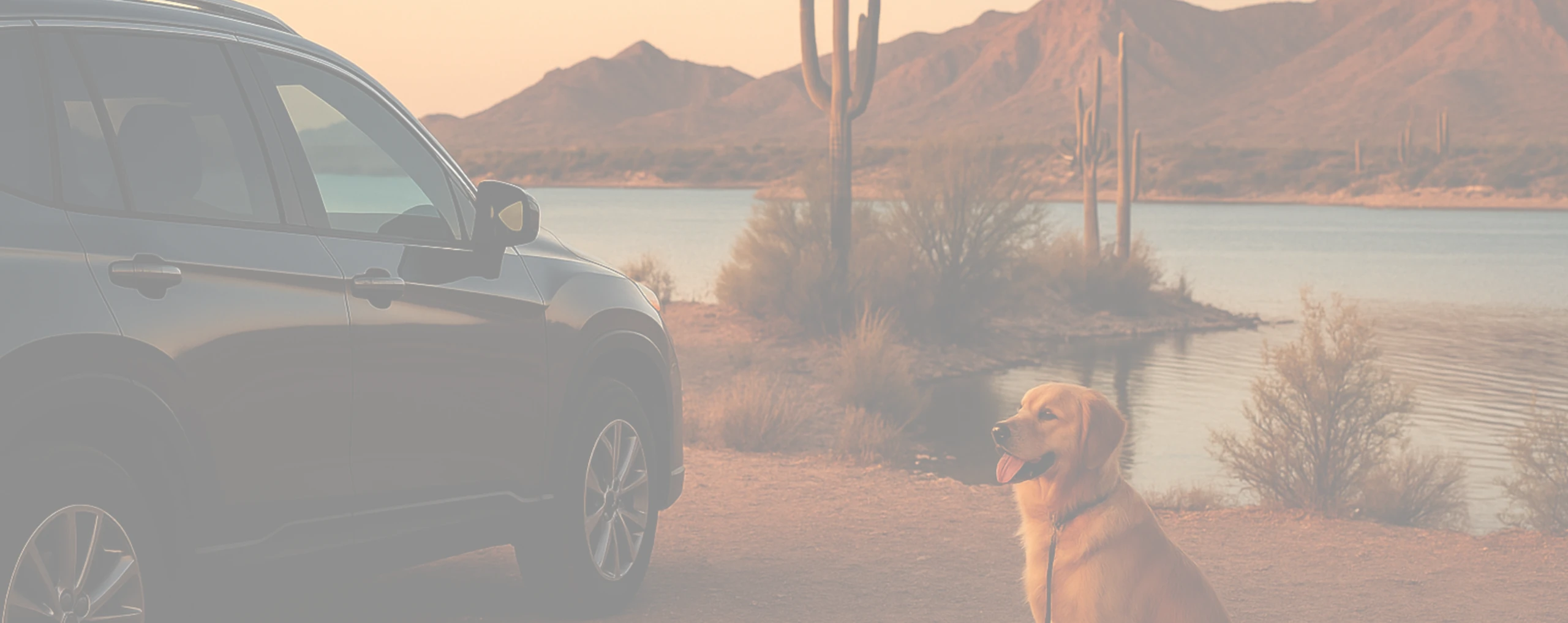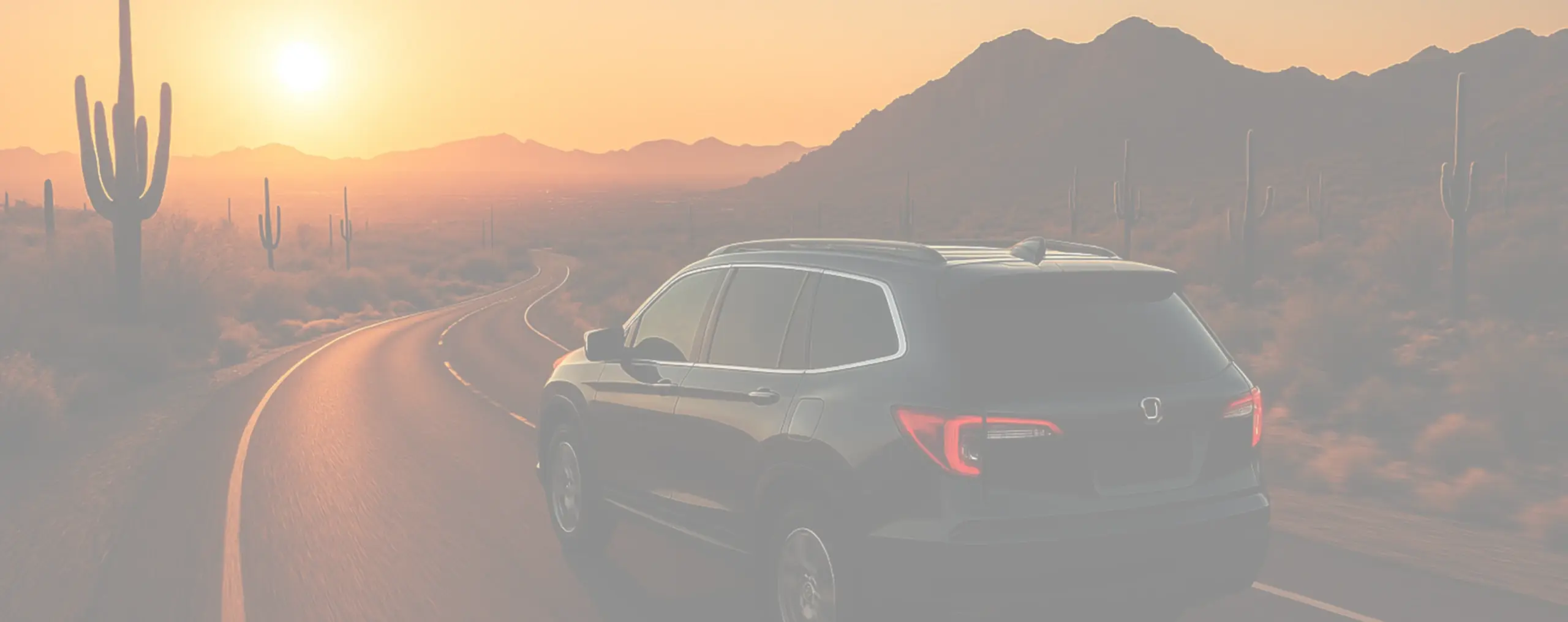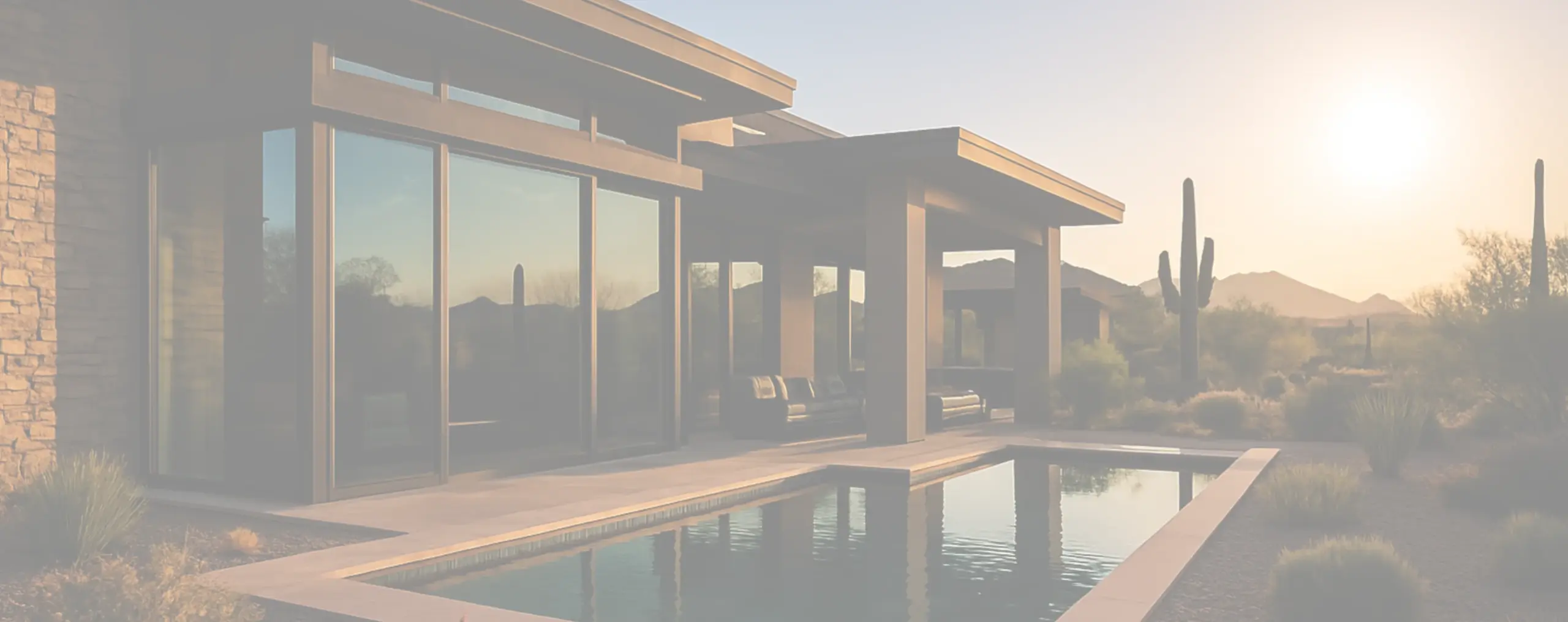Bringing a dog or two along transforms an ordinary drive into a real trip—especially when that trip ends at the water or a campsite. Arizona sunlight, however, changes the rules. Infrared heat soaks into seats and trim, dashboards reflect into the windshield, and dusty stretches between town and the lake make it tempting to crack the windows when you shouldn’t. Thoughtfully spec’d car window tint will not—and should not—be used to leave animals unattended in a vehicle, but it can noticeably lower in-cabin heat while you’re driving, reduce the glare that agitates sensitive eyes, and help your air-conditioning keep up so everyone settles in faster after each stop. This guide explains what tint can and cannot do for pets, why ceramic, color-neutral films are different from simply “going darker,” how those benefits play out on real Arizona routes, and what to expect from a professional, Arizona-compliant installation.
What Window Tint Can—and Can’t—Do for Pets in the Arizona Sun
The most important truth comes first: window tint is not a permission slip to leave pets in a parked car. Even on pleasant days, interiors can heat quickly, and animals should always be supervised with active cooling and water on hand. Where tint helps is in motion and during short, attended pauses—fueling, checking a site map, loading a cooler—by reducing the infrared (IR) energy that turns interior surfaces into radiators. When IR is controlled, belt buckles cool more quickly, side panels don’t continue to radiate heat onto a dog’s shoulder, and the air your A/C just cooled doesn’t immediately re-warm off the dash. Tint also limits ultraviolet exposure that ages interiors and can exacerbate heat stress, and it reduces the windshield “veil” of brightness that makes both drivers and pets squint. The outcome is practical: windows can stay up while you run recirculate through dusty sections, the cabin reaches a steady temperature sooner, and animals settle more easily because the light and heat inside the car feel less aggressive.
Why Ceramic, Color-Neutral Films Beat “Darker Is Better”
Many drivers assume the only way to cut heat is darker glass, but that approach trades daytime comfort for nighttime uncertainty and can distort colors under certain lighting. Modern ceramic films target heat at the spectrum level, rejecting a high share of IR while maintaining a legal, lighter visible-light transmission (VLT) on the front windows. The lighter VLT preserves night clarity for the trip home while ceramic tech carries the cooling work you used to expect from a very dark tint. Choosing a color-neutral, non-metal construction is equally important. Neutral optics prevent the blue/green casts that shift how lane lines, brake lamps, and camera feeds appear, and non-metal layers help avoid interference with GPS, cellular service, pet-tracker tags, toll transponders, and driver-assist antennas that often sit behind the windshield header. In short, you get the thermal relief you want without sacrificing visibility, signal reliability, or the natural look of the road and sky.
Windows Up on Dusty Stretches: Comfort Without the Compromise
Anyone who has driven out of town on a breezy afternoon knows the cycle: a vehicle turns off the main road, dust plumes rise, windows come down for fresh air, and everyone—pets included—coughs. A ceramic setup changes the equation. Because the cabin cools faster and stays cool longer at lower fan speeds, you can keep the windows up and run recirculate while the worst of the fines and pollen pass. That choice benefits pets most of all, since their noses are close to the surfaces that collect dust and they can’t communicate discomfort as quickly as a human can. With heat and brightness controlled, you can focus on smooth driving and hydration breaks instead of fighting the environment through open glass. The difference is subtle at first and obvious by the time you roll into camp: fewer hot spots, less panting, calmer passengers.
From Driveway to Shoreline: A Lake Pleasant Example
Consider a day that starts in town and ends at the water’s edge. You load the vehicle, point north, and by mid-morning you’re coming into the open light near Lake Pleasant Regional Park. The sun is high, the asphalt is warm, and the last ten minutes always feel hotter than they should. With a color-neutral ceramic film on the side glass and a clear, high-IR layer on the windshield where permitted, the thermal curve is different. The dash doesn’t radiate onto your dog’s chest when you stop at the ranger station. Glare off the water doesn’t wash across the rear glass and turn the cargo area into a light show. When you park, you can orient the vehicle to keep the largest pieces of glass out of direct beam and deploy a reflective shade while you rig a leash or carry gear. None of these steps is exotic, and that is the point: tint makes good habits more effective so the entire outing feels easier on the animals that can’t explain what’s bothering them.
Where Your Pets Ride—and What They Touch—Matters
Tint is part of comfort, not a replacement for layout and materials. If your dog rides in a crate, keep it away from direct beam paths through the side windows and leave air space around the shell so it does not conduct heat against a shoulder or hip. For un-crated travel, a breathable cover over leather or dark vinyl helps prevent “hot spots” and gives paws traction on corners. Ceramic films reduce radiant load on those surfaces so the A/C can pull temperatures down rather than constantly reheating off panels and glass. If your vehicle has a panoramic roof or fixed skylights, a clear, high-IR film overhead preserves the open feel but cuts the heat that otherwise comes straight down onto a sleeping dog’s back. Privacy glass or a slightly darker rear section, matched to a uniform tone, is also useful at trailheads where vehicles sit with gear inside; it dulls reflections from the water and makes the cargo area less visually busy to a watchful animal.
Care and Cleaning: Clarity Without Micro-Scratches
Desert dust is abrasive, and water around lakes or campgrounds can leave mineral spots if droplets bake on hot glass. The goal is to maintain clarity without creating micro-marring that only shows up when the sun hits at a shallow angle. Move grit before you wipe—either with a gentle rinse or a puff of clean air—then use an ammonia-free, tint-safe cleaner applied to a plush microfiber towel rather than sprayed directly at film edges. Work along rear defroster lines instead of across them, and dry off overspray promptly after time at the shoreline. Keep a dedicated towel in the door pocket for the inside of the windshield; one quick pass before a low-sun departure can eliminate the faint smear that would have bloomed into a halo ten minutes later. The payoff appears in your mirrors and on your pet’s face: calmer eyes, steadier breathing, fewer distractions.
A Local Note for Peoria Drivers (and an Easy Next Step)
If your home base is Peoria and Lake Pleasant is your default weekend plan, you can get a quick, local overview of scheduling and film options through the service page for Peoria car window tinting. Local technicians who install in this climate every day understand the push-pull of dust, hard water, and long sun angles across the windshield, and they can recommend a film family and shade progression that balances comfort for animals with legal night visibility for you. Bring your vehicle details, any roof glass questions, and your itinerary; a short conversation before the season begins is usually enough to dial in a setup that feels natural on the very first drive.
The Bottom Line: Pets Ride Better When Heat and Glare Are Managed
Traveling with animals adds joy to the drive—and responsibility to get the details right. Ceramic, color-neutral window tint won’t replace shade, water, or supervision, but it will remove a major source of radiant heat, cut the glare that makes both humans and pets squint, and help your cooling system maintain a steady temperature with the windows up. Those gains turn into less panting and fidgeting from your co-pilot, fewer hot spots on surfaces they touch, and more of the calm you want on the road to the lake or back home after dark. When you’re ready to put a plan in place, the team at ClearView Glass & Tint can recommend a legal, signal-safe ceramic setup, install it in a clean bay with plotter-cut precision, and support it with a desert-ready warranty—so every mile from driveway to shoreline feels cooler, clearer, and kinder to the passengers who can’t tell you when they’re too warm.
Written by Thomas McDonald
Latest Articles, Industry News & Expert Insights
Stay informed with updates, expert perspectives, and practical guidance on glass repair, replacement, and window tinting across automotive, residential, and commercial applications.







